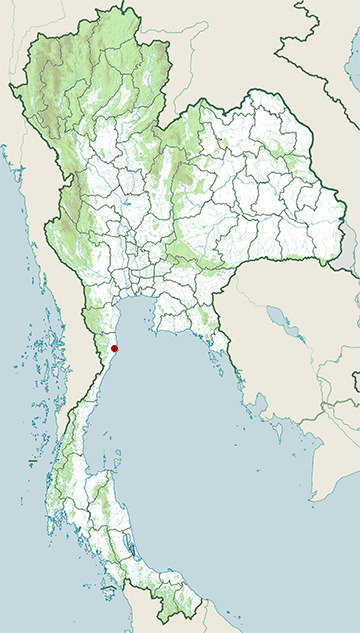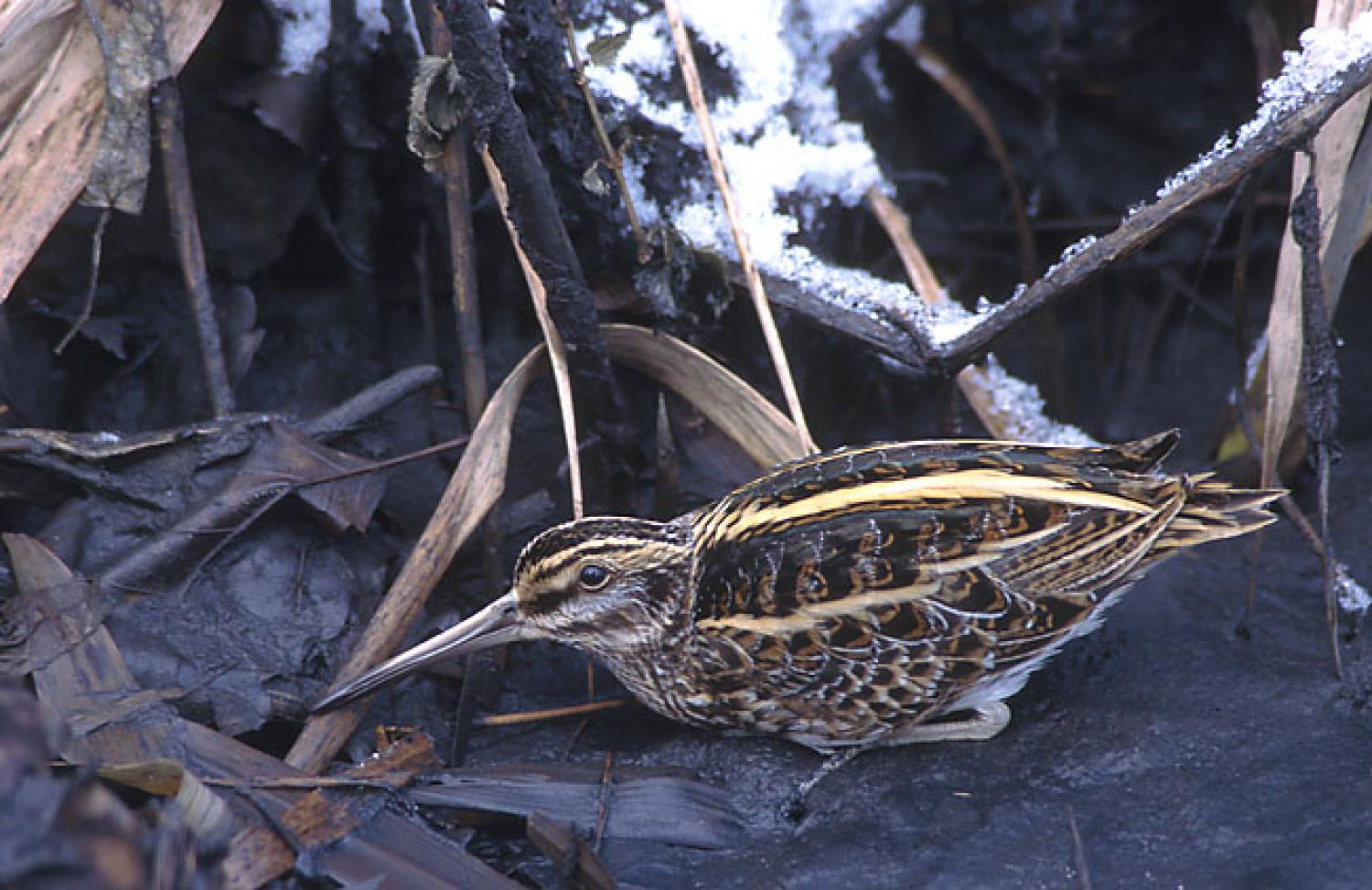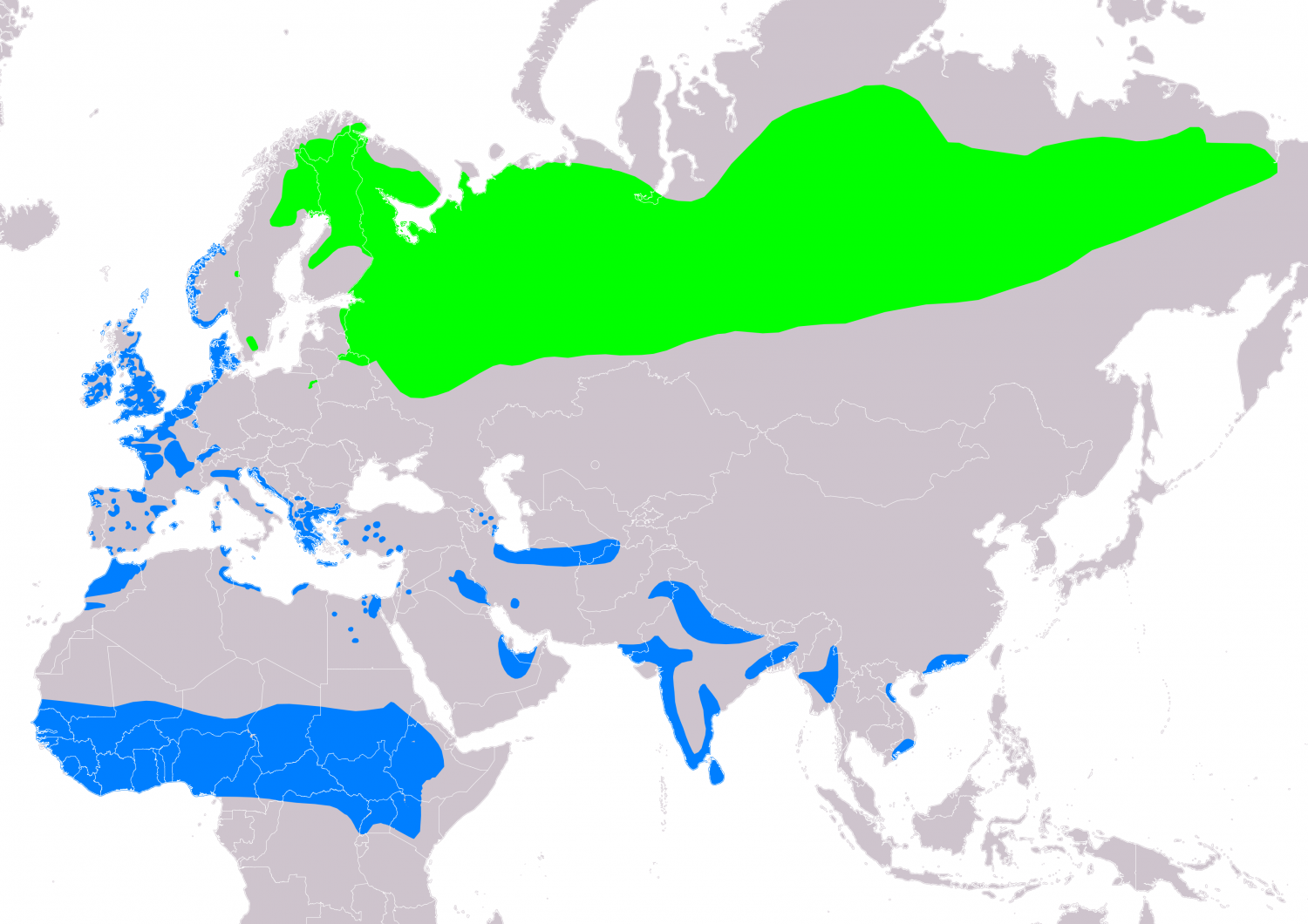Species of Thailand
Jack snipe
Lymnocryptes minimus
Morten Thrane Brunnich, 1764
In Thai: นกปากซ่อมเล็ก
The jack snipe or jacksnipe (Lymnocryptes minimus) is a small stocky wader. It is the smallest snipe, and the only member of the genus Lymnocryptes. Features such as its sternum make it quite distinct from other snipes or woodcocks.
Etymology
The common name has been said to come from the Welsh word for a snipe, giach (pronounced with a hard g), but modern dictionaries say it comes from the masculine name Jack. Alfred Newton hypothesized that, "It may be, as in Jackass, an indication of sex, for it is a popular belief that the Jack-Snipe is the male of the common species; or, again, it may refer to the comparatively small size of the bird, as the 'jack' in the game of bowls is the smallest of the balls used, and as fishermen call the smaller Pikes Jacks."
The genus name Lymnocryptes is from Ancient Greek limne, "marsh" and kruptos, "hidden". The species name minimus is from Latin and means "smallest".
Description
Adults are smaller than common snipe and have relatively shorter bill. Length is 18 - 25 cm, wingspan is 30 - 41 cm and weight is 33 - 73 g. The body is mottled brown on top and pale underneath. They have a dark stripe through the eye. The wings are pointed and narrow, and yellow back stripes are visible in flight. When seen, the distinctive bobbing movement, as if the bird is on springs, has an almost hypnotic quality.
The head pattern of jack snipe differs from common snipe and other species in the genus Gallinago, in that there is no central crown-stripe; instead, there are two pale lateral crown-stripes, which are separated from the supercilium by an area of dark plumage.
Distribution and habitat
Jack snipes are migratory, spending the non-breeding period in Great Britain, Atlantic and Mediterranean coastal Europe, Africa, and India. The jack snipe is one of the species to which the Agreement on the Conservation of African-Eurasian Migratory Waterbirds (AEWA) applies. Their breeding habitat is marshes, bogs, tundra and wet meadows with short vegetation in northern Europe and northern Russia.
Behaviour
Jack snipe can be secretive in their non-breeding areas and are difficult to observe, being well camouflaged in their habitat. Consequently, birdwatchers have developed a specialised technique for finding them. This involves walking through its marshy habitat until a bird is disturbed and flies up. Jack snipe will squat down and not flush from cover until an intruder is quite close. They then quietly fly a short distance before dropping back into vegetation.
Feeding
They forage in soft mud, probing or picking up food by sight. They mainly eat insects and earthworms, also plant material.
Breeding
The male performs an aerial display during courtship, during which it makes a distinctive sound like a galloping horse. It is silent in winter. They nest in a well-hidden location on the ground, laying 3–4 eggs.
This article uses material from Wikipedia released under the Creative Commons Attribution-Share-Alike Licence 3.0. Eventual photos shown in this page may or may not be from Wikipedia, please see the license details for photos in photo by-lines.
Category / Seasonal Status
Wiki listed status (concerning Thai population): Rare winter visitor
BCST Category: Recorded in an apparently wild state within the last 50 years
BCST Seasonal status: Non-breeding visitor
Scientific classification
- Kingdom
- Animalia
- Phylum
- Chordata
- Class
- Aves
- Order
- Charadriiformes
- Family
- Scolopacidae
- Genus
- Lymnocryptes
- Species
- Lymnocryptes minimus
Common names
- English: Jack snipe
- French: Bécassine sourde
- Thai: นกปากซ่อมเล็ก
Conservation status

Least Concern (IUCN3.1)
Photos
Please help us review the bird photos if wrong ones are used. We can be reached via our contact us page.
Range Map

- Khao Sam Roi Yot National Park

